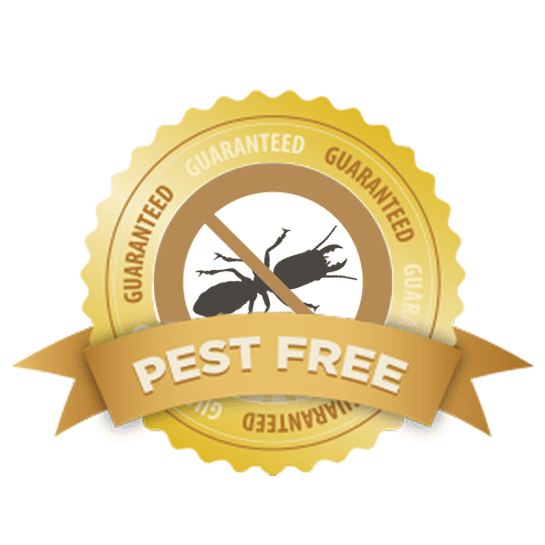Top Quality A1 Pest Control Services Charlotte - Safeguard Your Home
Wiki Article
Bed Bug Therapy Failure: Contrasting Chemical Vs. Non-Chemical Solutions
In the world of insect control, specifically when dealing with the consistent concern of bed insects, the option between chemical and non-chemical treatment remedies can be a pivotal one. Both methods offer unique benefits and downsides, influencing elements such as efficiency, safety factors to consider, and total price. By checking out the nuanced information of each approach, a more clear understanding of which path to seek in dealing with a bed insect invasion can be achieved.Efficiency of Chemical Therapies
Chemical treatments for bed bug infestations have actually been commonly identified for their rapid and powerful effectiveness in removing these parasites. When considering the performance of chemical treatments, it is critical to understand that they can give a comprehensive and fast service to a bed bug trouble.Additionally, chemical treatments have the benefit of offering recurring impacts, implying that they can proceed to get rid of bed pests even after the first application. This recurring action is specifically valuable in combating any kind of prospective re-infestations. In addition, the rapid activity of chemical therapies can bring relief to individuals encountering severe bed pest infestations, enabling them to regain control of their space promptly.
Safety And Security Interest In Chemical Solutions
When using chemical remedies for bed bug therapy is ensuring the security of passengers and the atmosphere,One important element that calls for mindful factor to consider. While chemical therapies can be reliable in removing bed insects, they might posture threats otherwise taken care of appropriately. Among the primary security interest in chemical options is the potential injury they can cause to human health. Exposure to specific chemicals utilized in bed pest therapies can bring about respiratory concerns, skin irritability, or various other unfavorable responses, especially in individuals with pre-existing problems or level of sensitivities. Additionally, improper application or dose of chemical pesticides can lead to harmful deposits sticking around in the treated area, positioning long-lasting wellness risks to passengers.In addition, the environmental effect of chemical options is an additional significant consideration. Some pesticides used in bed pest therapies may be unsafe to helpful insects, wildlife, and communities if they leach into the dirt or water supply. It is important to make use of chemical treatments sensibly, adhering to security standards, and taking into consideration less harmful alternatives to reduce these risks and make sure the reliable and secure monitoring of bed insect infestations.
Advantages of Non-Chemical Methods
Taking into consideration the potential safety problems and environmental impact connected with chemical solutions for bed insect therapy, checking out non-chemical strategies offers an encouraging option with a number of distinctive advantages. Non-chemical approaches provide a safer alternative for families, especially those with kids, family pets, or individuals cockroach pest control delicate to rough chemicals. These methods eliminate the threats of exposure to poisonous compounds, lowering the possibility for negative health impacts. In addition, non-chemical treatments are eco-friendly, as they do not add to air or water contamination, making them a lasting choice for parasite control.In addition, non-chemical options can be efficient in targeting bed bugs, including hard-to-reach areas where chemical treatments may not permeate. Approaches such as warmth treatment, vacuuming, steam cleaning, and mattress coverings supply thorough elimination without using unsafe chemicals. Moreover, non-chemical strategies can be much less turbulent, requiring minimal prep work and permitting quicker reentry right into treated areas. Overall, opting for non-chemical bed pest treatment approaches not just focuses on security and ecological protection however also guarantees reliable and thorough pest control.
Limitations of Non-Chemical Treatments

In addition, non-chemical therapies often require numerous applications to achieve effective eradication. This can be lengthy and may not constantly ensure complete removal of all bed bugs and their eggs, especially in concealed or hard-to-reach areas.
In addition, the success of non-chemical treatments greatly counts on proper application and thoroughness, which can be challenging for individuals without professional proficiency. Poor application of non-chemical methods may lead to insufficient obliteration, resulting in relentless invasions and the requirement for extra therapies.
As a result, while non-chemical therapies have their advantages, it is vital to recognize these constraints and consider them when figuring out one of the most reliable method for managing bed insect invasions.
Price Comparison: Chemical Vs. Non-Chemical Options
Offered the constraints associated with non-chemical therapies, a necessary aspect to assess in the context of bed bug management is the price comparison between chemical and non-chemical alternatives. In contrast, non-chemical treatments like warm treatment or vapor can be extra costly, with prices varying from $1,000 to $6,000 for an entire home. While the preliminary price of chemical therapies may appear reduced, numerous treatments may be called for to fully eliminate the invasion, potentially increasing the total expense.Final Thought

Considering the prospective safety issues and ecological influence associated with chemical options for bed bug therapy, discovering non-chemical techniques offers an appealing alternative with several distinctive advantages.Provided the constraints associated with non-chemical treatments, an essential facet to assess in the context why not find out more of bed pest management is the price contrast between chemical and non-chemical options. In contrast, non-chemical treatments like warmth therapy or vapor can be more expensive, with expenses ranging from $1,000 to $6,000 for a whole home. While the first cost of chemical treatments may appear lower, multiple treatments might be called for to fully eliminate the invasion, possibly raising the total price.In conclusion, when comparing chemical and non-chemical bed bug therapy choices, it is important to take into consideration performance, safety, benefits, restrictions, and price.
Report this wiki page